The monumental Old Legislative Building (also the Old Congress Building), now the home of the National Museum of Fine Arts (operated by the National Museum of the Philippines since 1996), was formerly the home of the bicameral congress from 1926 to 1972, and the Philippine Senate from 1987 to 1997. The building was originally designed by Ralph Harrington Doane (Consulting Architect of the Bureau of Public Works, precursor of the Department of Public Works and Highways). Doane, with the assistance of Antonio Mañalac Toledo, originally designed the building as the future home of the National Library of the Philippines, according to the plan of Manila of Daniel H. Burnham.
Check out “National Museum of Fine Arts”
Began in 1918, it was built under the supervision of the architecture firm of Pedro Siochi and Company but construction was delayed due to lack of funds. In 1926, the Philippine Legislature (established on October 16, 1916) decided to move into the Library building and changes to the building’s layout were done accordingly by architect Juan M. Arellano who added the fourth floor and the chambers for legislators, changed the central façade and incorporated the ornamentation and sculptural work.
On July 16, 1926, the building was inaugurated with the formal opening of the Second Regular Session of the 7th Philippine Legislature in the presence of Governor-General Leonard Wood, then Senate President Manuel L. Quezon, House Speaker Manuel Roxas, and Colonel Carmi A. Thompson (envoy of United States President Calvin Coolidge). From 1928 to 1944, it was concurrently the headquarters of the National Library.
In 1935, the Commonwealth of the Philippines was proclaimed and the inauguration of President Manuel L. Quezon was held outside the building which became the home of the National Assembly of the Philippines (it was subsequently known as the National Assembly Building). In 1940, a bicameral Congress of the Philippines, consisting of a Senate and House of Representatives, replaced the National Assembly, with the Senate occupying the upper floors and the House occupying the lower floors. The building would serve as home of the Commonwealth Congress until 1945.
In February 1945, during World War II, Japanese forces used the building and its premises as their stronghold, modifying it with defensive installations. Surrounding the building were obstacles, roadblocks, trenches, pillboxes and barbed wire and guns and other heavy machine guns were strategically installed on the building floors. For several days until February 27, the American forces bombarded the building with artillery fire and the building’s north and south wings were heavily damaged. Most of the structure was beyond repair, except for the still-standing central portion.
In 1946, with the inauguration of the Republic of the Philippines, the building was rebuilt, mostly from memory and with the aid of a few remaining blueprints, by the U.S. Philippine War Damage Corporation who maintained its original building four-storey height, footprint and dimensions but with less ornate interior and exterior ornamentation. Reconstruction began in 1949 and, that same year, the Congress moved back in. In 1950, the two wings of the building were completed.
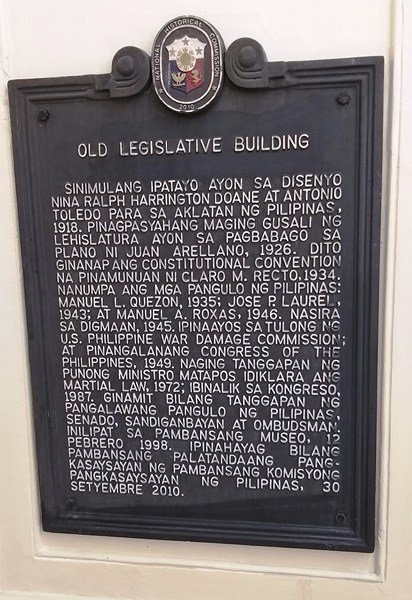
Historical plaque (Old Legislative Building) installed by the National Historical Commission in 2010
The building, now known as the Congress Building, continuously served as home of the Congress of the Philippines until 1972 when the Congress was effectively dissolved and the building was padlocked with the declaration of martial law. For a short time, the fourth floor of the building became home of the offices of the Prime Minister of the Philippines (a position established under the 1973 Constitution of the Philippines). Offices of various government branches were also housed here, with the Ombudsman occupying the third floor, the National Museum on the second floor, and the Sandiganbayan on the ground floor. For the duration of that time, the building was called the Executive House.
With the ratification of the 1987 Constitution of the Philippines, the Congress of the Philippines was reestablished with the Senate using the original Congress Building for their plenary sessions until May 1997 (when it moved to the Government Service Insurance System Building on reclaimed land on Manila Bay in Pasay)) and the House of Representatives moving to the Batasang Pambansa Complex in Constitution Hill, Quezon City. The former office of the Prime Minister was taken as the Office of the Vice-President.
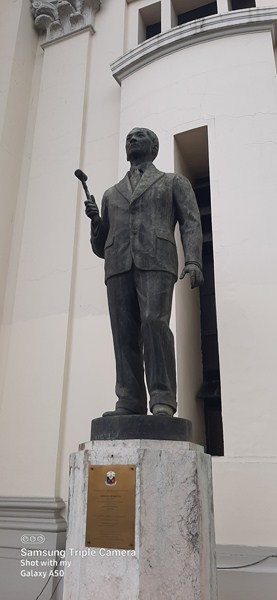
Bronze statue of Sergio Osmena, sitting on a marble pedestal created by Federico S. Ilustre, was created by Guillermo Tolentino and cast by Fonderia Berdicando Marinelle in Italy. It was unveiled in 1966. In 2019, this statue was declared as an Important Cultural Property by the National Museum of the Philippines.
In 1998, the building was then turned over to the National Museum of the Philippines. On September 30, 2010, the National Historical Commission of the Philippines (NHCP) declared the building as a “National Historical Landmark” by virtue of Resolution No. 8 (dated September 30, 2010). A marker commemorating the declaration was unveiled on October 29, 2010.
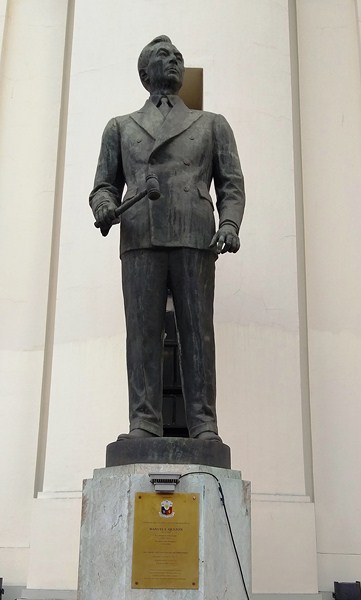
Bronze statue of Manuel L. Quezon, sitting on a marble pedestal created by Federico S. Ilustre, was created by Guillermo Tolentino and cast by Fonderia Berdicando Marinelle in Italy. It was unveiled in 1965. In 2019, this statue was declared as an Important Cultural Property by the National Museum of the Philippines.
On October 29, 2012, the restored old Senate Session Hall was inaugurated after a two-year restoration project aimed to bring back its pre-war architectural glory that is intended to be part of the learning tours of museum visitors. On July 16, 2019, the NHCP unveiled the Philippine Flag Hoisting marker to honor the site’s historic value. In view of this, the Philippine Flag is to be permanently hoisted and lighted at night at the National Museum of Fine Arts.
The four-storey building has a rectangular plan with a layout oriented with its line of symmetry in an east-west axis, longitude in a north-south axis, and its main entrances on the east and the west. Courtyards at the north and south flank the building’s central core spaces. Organized around these courtyards are the associated rooms, with single volume hallways east and west, and double volume hallways north and south. Staircases are located at both ends of the entrance halls and the four corners of the building.
The columned portico, at the second floor, signals the west entrance which is accessed via a flight of stairs and the carriageway ramp coming from ground level along Padre Burgos Street. The west portico has four Corinthian columns that rise the full height of the building.
The Neo-Classical façade is articulated with giant Corinthian columns and pilasters rising from the second floor level to the height of the two storeys of the building, with the first storey resembling the one-storey high plinth where these columns and pilasters rest.
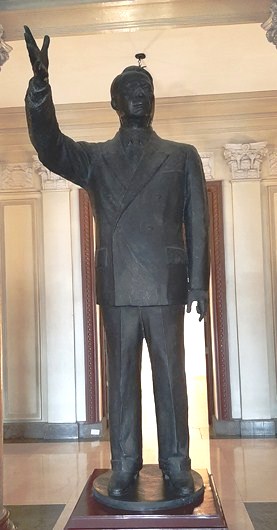
Bronze statue of President Manuel A. Roxas, created by Guillermo Tolentino, was cast by Fonderia Berdicando Marinelle in Italy. Commissioned by Gerardo M. Roxas in 1968, it was unveiled in the lobby on April 15, 2016.
The columns and pilasters surrounding the entire wall are topped by decorative entablatures. The projecting central bay, featuring a group of four columns, has corbelled balconies on the third level. Another group of four columns, with similar Corinthian capitals, are also featured at the corner bays.
Fenestrations consist of rectangular windows decorated with grillwork. Except for the west central bay with the columned portico, both the east and west façades are identical. Identical east and west pediments, with relief sculptures, surmount the central part of the building. Relief sculptures on the tympanum of the pediment, depicting “Inang Bayan” surrounded by Greek deities, emphasizes grandeur and nationalism and ennobles the edifice. From the west and south of the building, respectively, you can enjoy a splendid view of Intramuros and Rizal Park.

Statue of Diwata , a sculpture of a winged fairy done in reinforced concrete by Guillermo Tolentino, welcomes visitors tot the museum.
An arched porte-cochere, protecting the east entrance at the ground level, is approached via the east driveway from the present east open space (formerly a southward radial road with Agrifina Circle as its terminus).
Old Legislative Building: Padre Burgos Avenue, Ermita, Manila 1000, Metro Manila. Coordinates: 14°35′13″N 120°58′52″E.

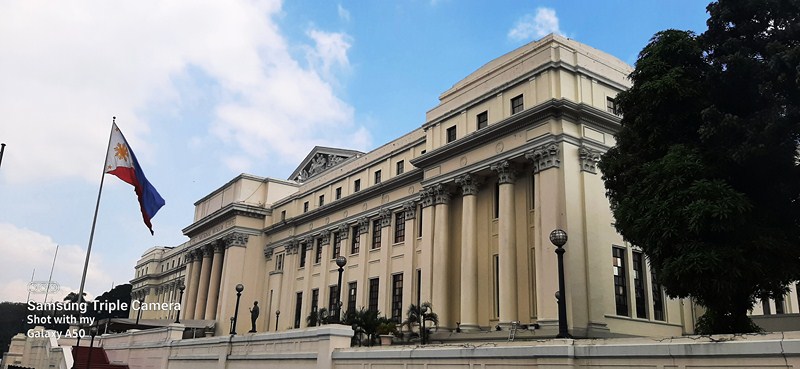
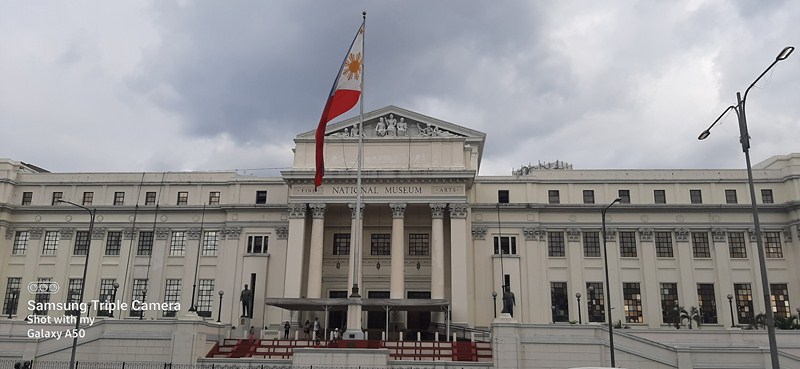
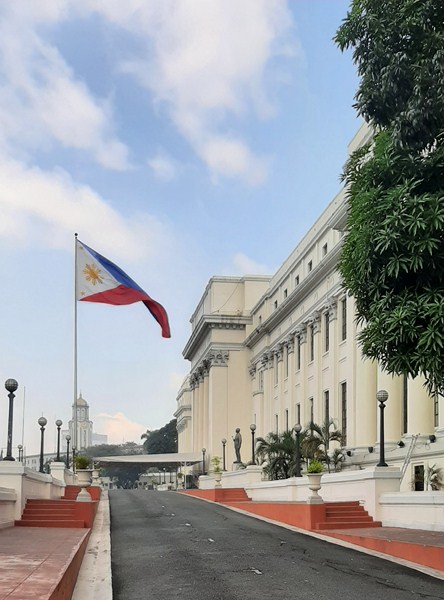
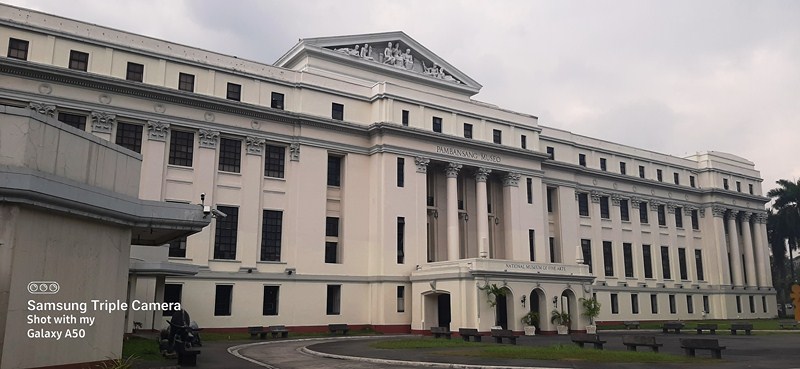
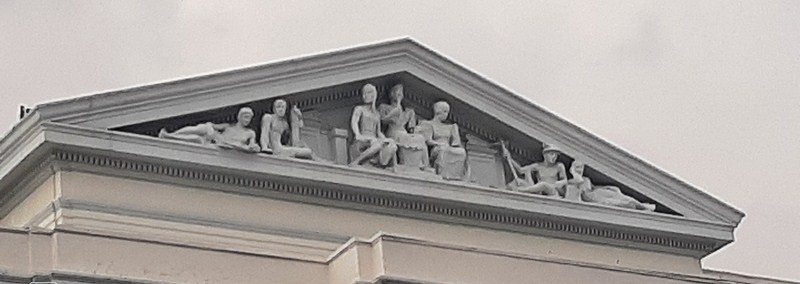
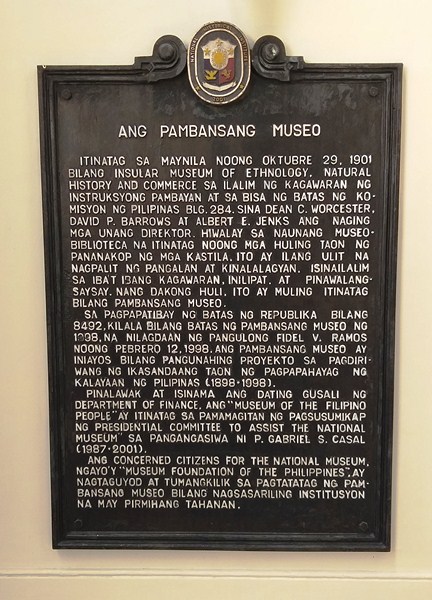
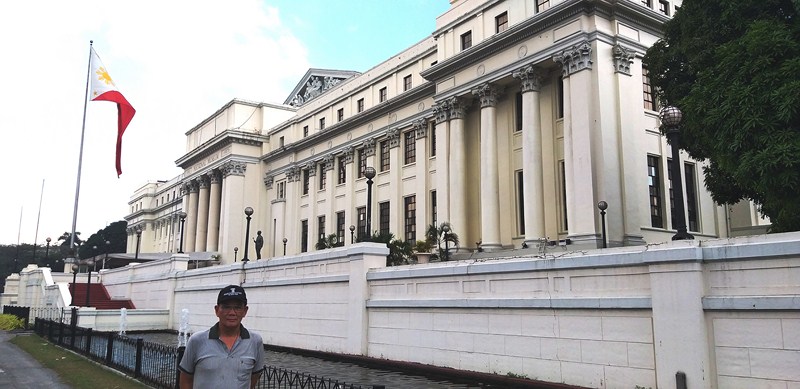
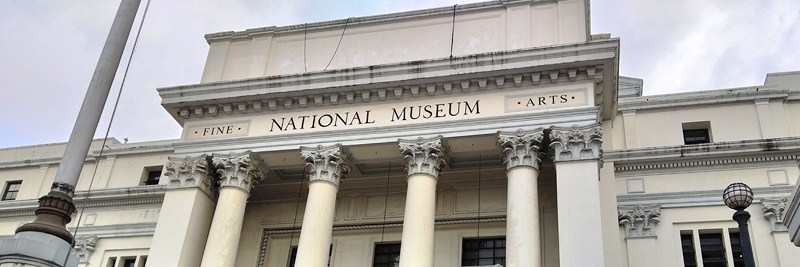
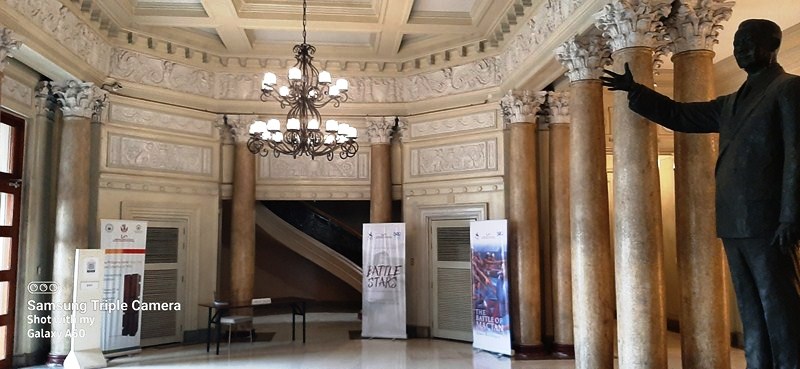
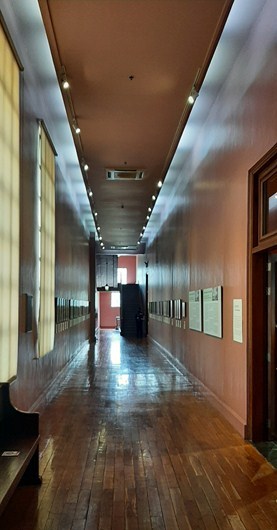
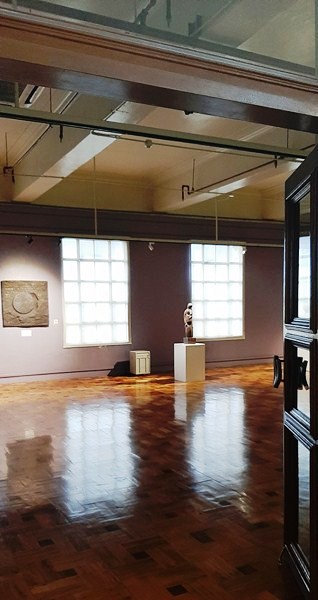
Dear benjielayug.com owner, You always provide valuable information.